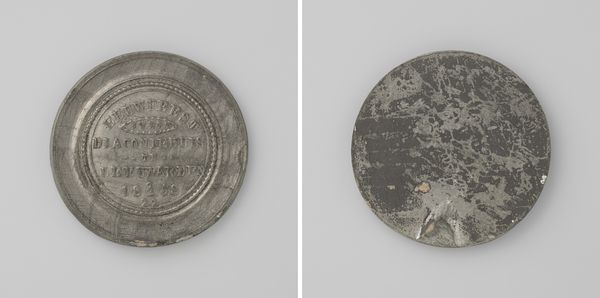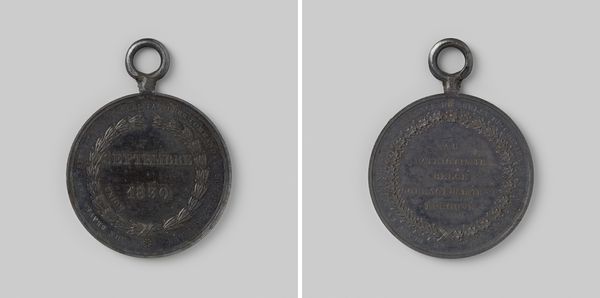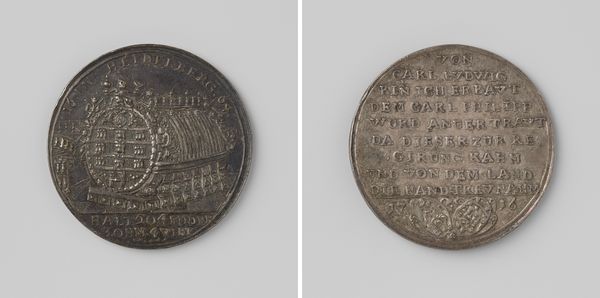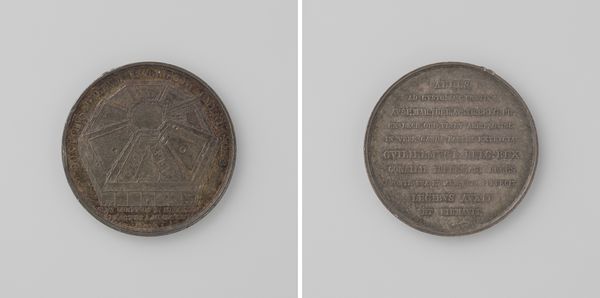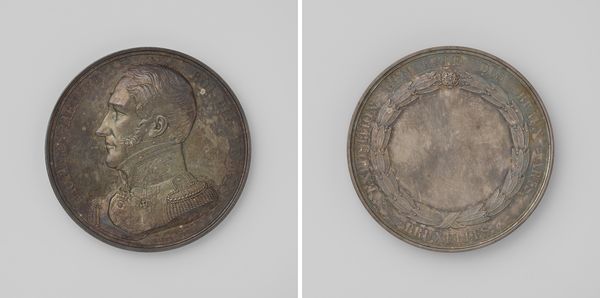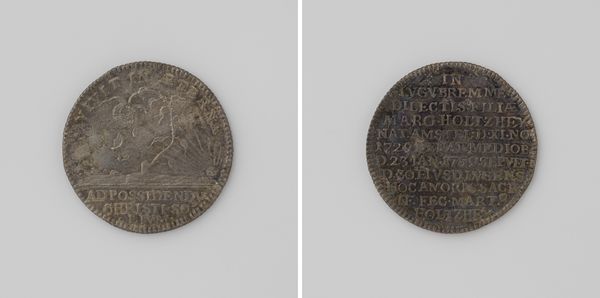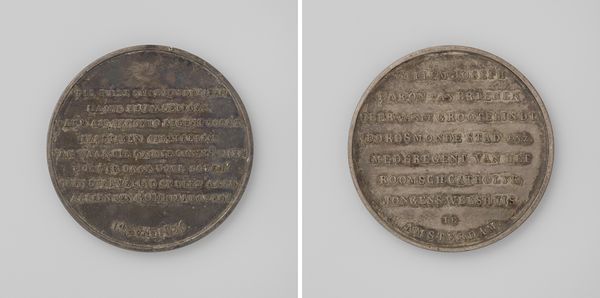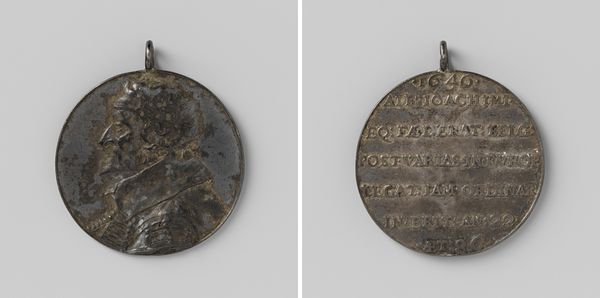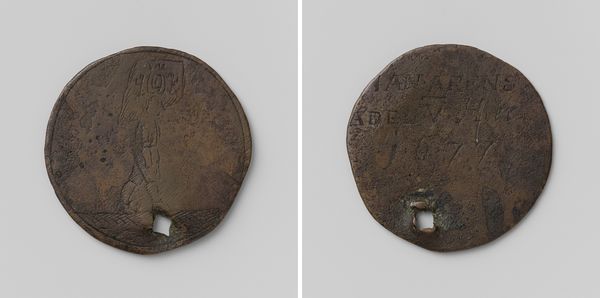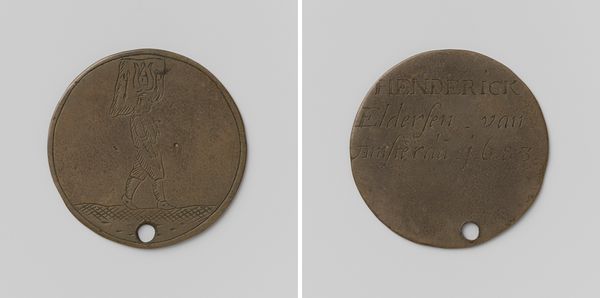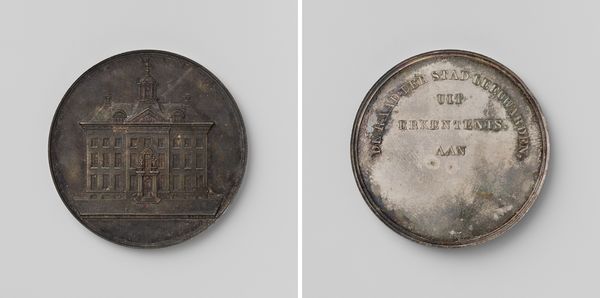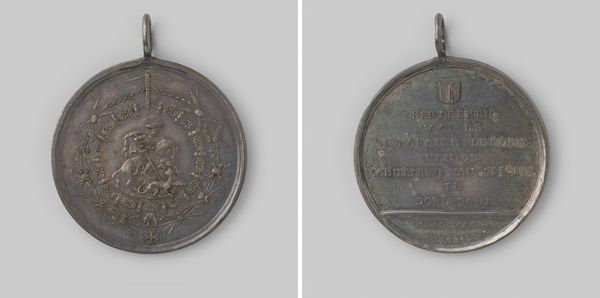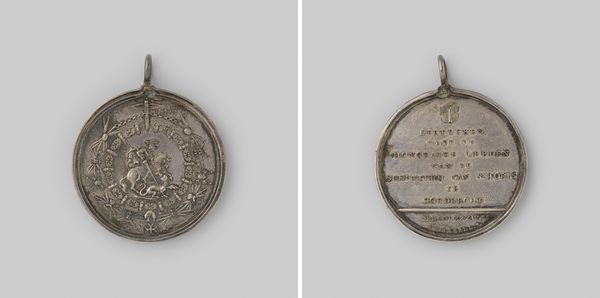
Dimensions: diameter 2.7 cm, diameter 2.5 cm, weight 4.33 gr
Copyright: Rijks Museum: Open Domain
Editor: Here we have a metal engraving from 1764, celebrating the coronation of Joseph II as Holy Roman Emperor. It's titled "Kroning van Jozef II tot Duits keizer te Frankfurt," currently housed in the Rijksmuseum. It's so small and worn; you can tell it has age and probably history. What strikes you about it? Curator: Well, immediately I see it not just as an artwork, but as a piece of propaganda, meant to disseminate an idea about Joseph II. Medals like these weren't just commemorative; they actively shaped public perception. Consider the context: Frankfurt, the site of the coronation, became for a time the de facto stage for imperial legitimacy. Does it make you think differently about it as an historical object? Editor: It does, yes! Knowing that it was meant to sway public opinion gives the piece a different edge. Almost like a newsreel you can carry in your pocket. I’m curious about its circulation; were pieces like this widespread, or only available to certain classes? Curator: Good question! That would largely depend on cost, and how many were commissioned. Monarchs needed popular approval—or at least, the approval of influential segments of the population—so distribution was important. What's also significant is the implicit power dynamic. It suggests who commissioned the medal, for whom, and what they intended people to think and believe about the new emperor. How does knowing this, inform our understanding? Editor: I’m thinking of who could own something like this, what wearing it around would have symbolized about them, who made and paid for them—all that definitely fills in the scene and complicates my reading. Curator: Exactly! It becomes more than a portrait; it’s a statement about power, access, and influence in 18th-century society. We might reflect on how something small can signify big meaning! Editor: It’s really a reminder that art doesn't exist in a vacuum. Thinking about it as a political object reshapes the viewing experience.
Comments
No comments
Be the first to comment and join the conversation on the ultimate creative platform.
